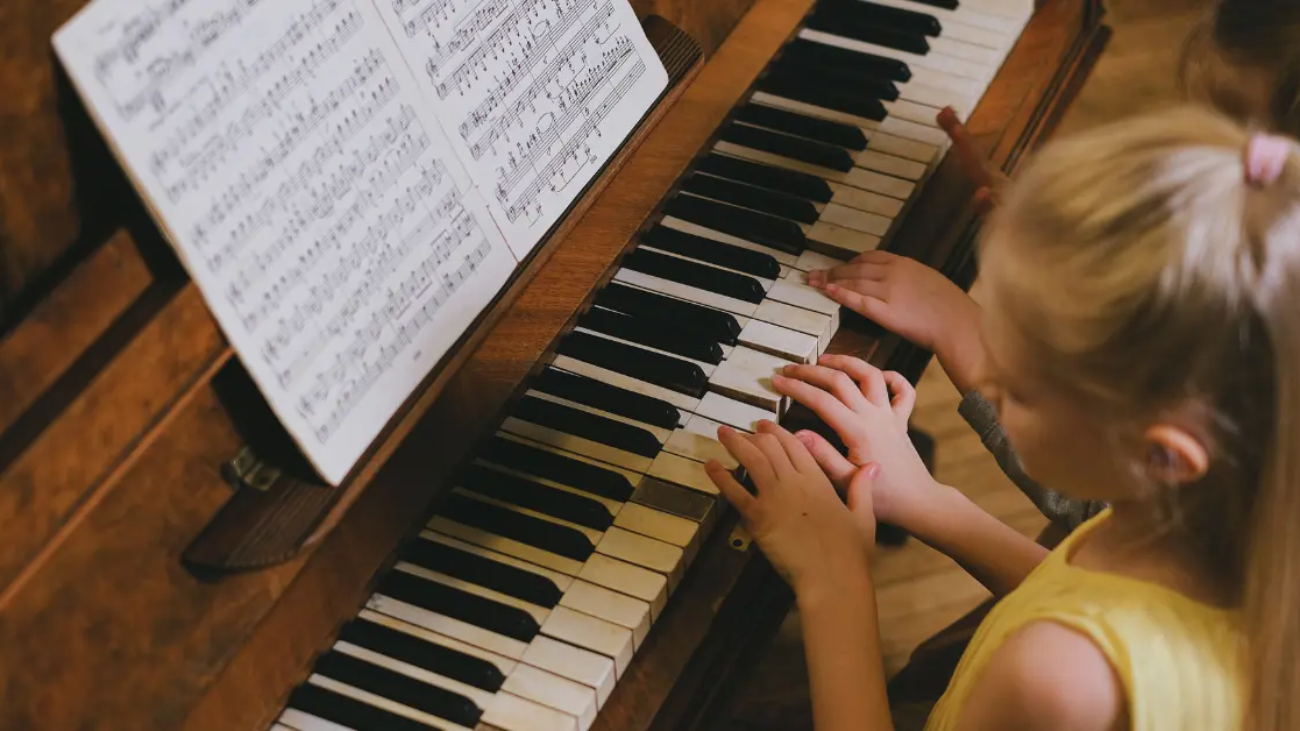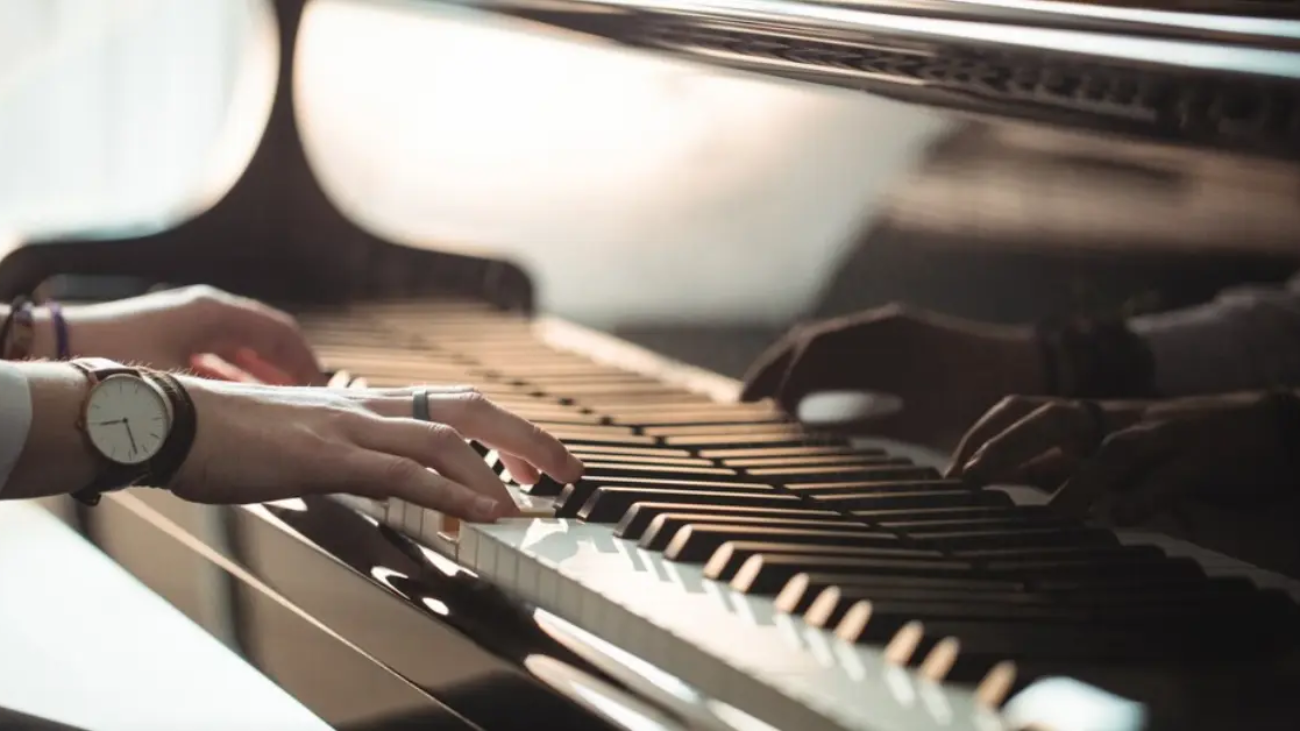Learn why the keyboard is the best for kids when starting music

Choosing a musical instrument for your child is a big decision. It’s about more than just music—it’s about nurturing creativity, discipline, confidence, and even brain development. When it comes to the best instrument to start with, many experts and music educators agree on one thing: the keyboard is the best first instrument for kids. Whether you’re thinking about lessons, looking for a hobby, or exploring early childhood development, the keyboard offers an unbeatable combination of simplicity, versatility, and fun. In this blog, we’ll explore all the powerful reasons why the keyboard should be your top pick when introducing your child to the world of music.
1. Easy to Learn and Play from Day One
One of the biggest advantages of a keyboard is its beginner-friendly nature.
Unlike string or wind instruments that require precise finger placement or breath control, the keyboard produces sound with a simple press of a key. This makes it ideal for small hands and young learners.
Kids can start playing simple songs within days, giving them a confidence boost and motivation to keep learning.
2. Builds a Strong Musical Foundation
The layout of the keyboard is perfect for teaching musical structure and theory.
Children naturally begin to understand concepts like scales, chords, intervals, and harmony just by playing and experimenting with different keys.
It also helps them visually see the relationships between notes, making music theory less abstract and easier to grasp.
This foundation proves invaluable if they decide to move on to other instruments later in life.
3. Develops Both Hands and Brain Coordination
Playing the keyboard strengthens hand-eye coordination and encourages both hands to work independently.
This develops fine motor skills and strengthens connections between the left and right hemispheres of the brain.
Over time, kids learn to read music while simultaneously coordinating finger movements—a brain-boosting multitasking skill that benefits other areas of learning like math and language.
4. Encourages Creativity and Self-Expression
With a keyboard, children are not limited to playing classical tunes—they can explore sounds, rhythms, and even compose their own music.
Modern keyboards come with a variety of tones, beats, and recording features that inspire creativity and imagination.
Improvising and creating music from scratch allows them to explore emotions, express feelings, and develop their own musical identity.
5. Affordable and Widely Accessible
Keyboards are one of the most budget-friendly instruments on the market.
Entry-level keyboards with 61 keys and built-in speakers are available at reasonable prices, often less than the cost of beginner violins or guitars.
You don’t need expensive accessories, and many models are portable and space-saving—ideal for home practice and small living spaces.
6. Quiet Practice with Headphones
Let’s face it: not all instruments are easy on the ears when a beginner is practicing.
The keyboard allows for silent practice with headphones.
This means your child can practice without disturbing the rest of the house or neighbors—perfect for busy households or apartment living.
7. Instant Gratification Builds Confidence
Because keyboards produce clear, in-tune notes effortlessly, kids can hear immediate results from their actions.
This immediate feedback is essential for building confidence and maintaining interest.
Even simple tunes like “Twinkle Twinkle” or “Mary Had a Little Lamb” can make a child feel like a superstar in their early learning phase.
8. Suitable for a Wide Age Range
Whether your child is 3 or 13, the keyboard adjusts to their level.
For toddlers, musical play with simple melodies develops ear training and rhythm.
Older children can progress to reading sheet music, learning classical pieces, or experimenting with digital production.
It’s one instrument that grows with your child’s ability and interest.
9. Access to Tons of Learning Resources
Because it’s such a popular instrument, there’s no shortage of learning materials for the keyboard.
You’ll find online tutorials, YouTube videos, beginner books, mobile apps, and local classes all tailored to young learners.
This makes it easier for parents to support practice at home and allows kids to learn at their own pace.
10. Prepares Kids for Other Instruments
Starting with the keyboard makes learning other instruments much easier.
A solid understanding of melody, harmony, and rhythm through keyboard playing translates beautifully to guitar, violin, or even singing.
It also improves aural skills and ear training, which are critical across all musical disciplines.
11. Supports Emotional Development
Music is a known emotional outlet, and learning the keyboard can be incredibly therapeutic for kids.
It helps children manage stress, express feelings, and develop emotional intelligence.
The sense of accomplishment from mastering a piece can improve self-esteem and mental well-being.
12. Encourages Routine and Discipline
Practicing a musical instrument requires regularity, patience, and persistence.
Establishing a keyboard practice routine teaches kids time management, responsibility, and discipline.
These habits carry over into schoolwork, sports, and other activities.
13. Keyboard Lessons Are Readily Available
Unlike niche instruments that might require specialist teachers, keyboard and piano teachers are widely available in most cities and even online.
You can choose between private lessons, group classes, or self-paced courses.
This flexibility means every family can find an approach that fits their schedule and budget.
14. Enhances Listening and Focus Skills
Learning the keyboard involves active listening, whether it’s matching pitch, following tempo, or playing in sync with backing tracks.
These listening skills improve attention span and focus—key abilities for academic and social success.
Children become better at observing details and processing auditory information, which also benefits their speech and language development.
15. Makes Learning Fun and Rewarding
Ultimately, the best first instrument for a child is one they enjoy—and keyboards are fun!
The variety of sounds, rhythms, and digital features like metronomes and built-in songs keep kids engaged.
Many keyboards even have games and interactive lessons, making practice feel more like play.
When children enjoy what they’re doing, they’re far more likely to stick with it—and succeed.
CONCLUSION
There are countless reasons why the keyboard is the best first instrument for kids. It’s approachable, educational, engaging, and versatile—everything a beginner-friendly instrument should be. From developing fine motor skills and musical understanding to building discipline and emotional intelligence, the keyboard offers more than just fun—it lays the groundwork for lifelong learning and creativity. So if you’re thinking of introducing your child to music, start with a keyboard. It’s not just a smart choice—it’s a brilliant investment in your child’s future.
At NMS Musicals, we offer a comprehensive range of musical instruments, including percussion, string, wind, and keyboard instruments. Our services encompass sales, expert servicing, and the manufacture of leather instruments. Explore our diverse collection and find the perfect instrument to suit your musical needs.
Visit our website to browse our offerings: nmsmusicals.in
For a closer look at our products, check out our shop page: nmsmusicals.in/shop
Stay connected with us through our social media channels:
- Facebook: https://www.facebook.com/nmsmusicalinstruments/
- Instagram: https://www.instagram.com/nmsmusicals/?hl=en
- YouTube: youtube.com/@nmsmusicals
Our shop locations are:
- Puducherry: 149, Perumal Koil Street, Heritage Town, Puducherry, 605001.
Map Link: https://maps.app.goo.gl/ejDwBBFEJmd3szxk7 - Chennai: No: 1, 1st Floor, Kandigai Street, TVS Nagar, Korattur, Chennai – 600076.
Map Link: https://maps.app.goo.gl/7oXmB6X7KQsqeuuw9
For inquiries, contact/Whatsapp us at 9500663895 or email us at laxman.m89@gmail.com.
Discover the world of musical instruments with NMS Musicals today!
For a visual overview of our percussion instruments, watch the following video:


 Cart is empty
Cart is empty 

